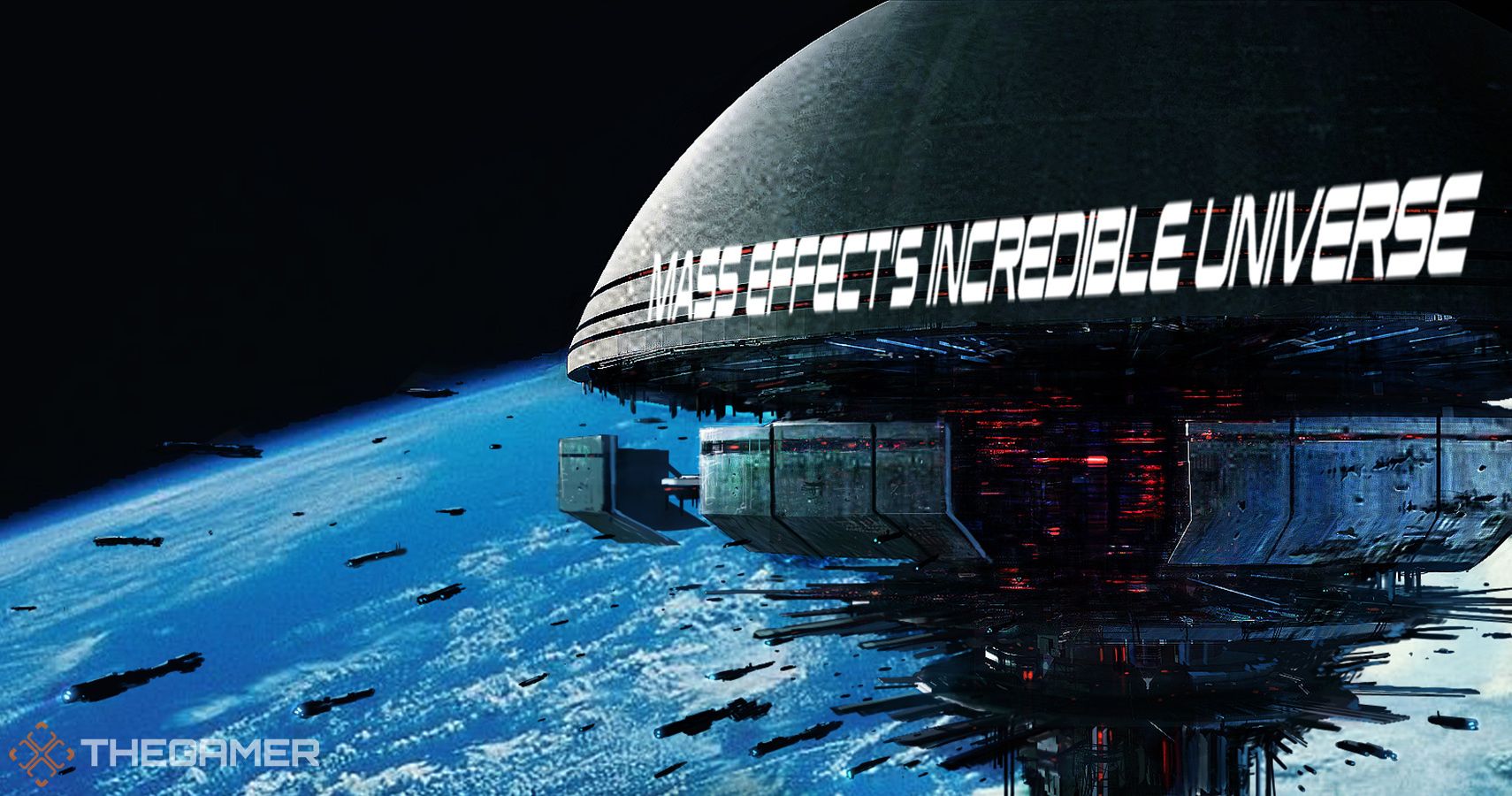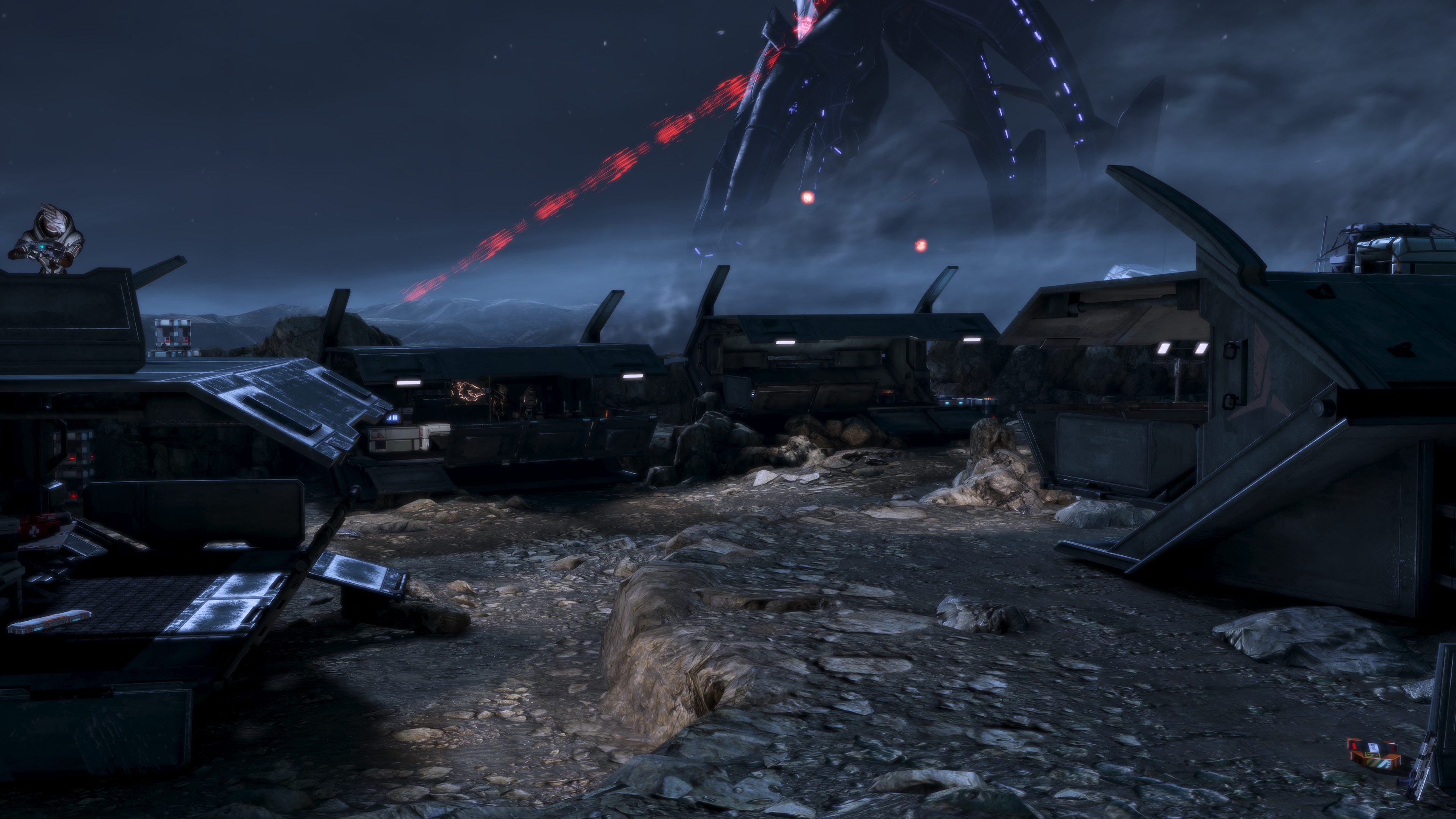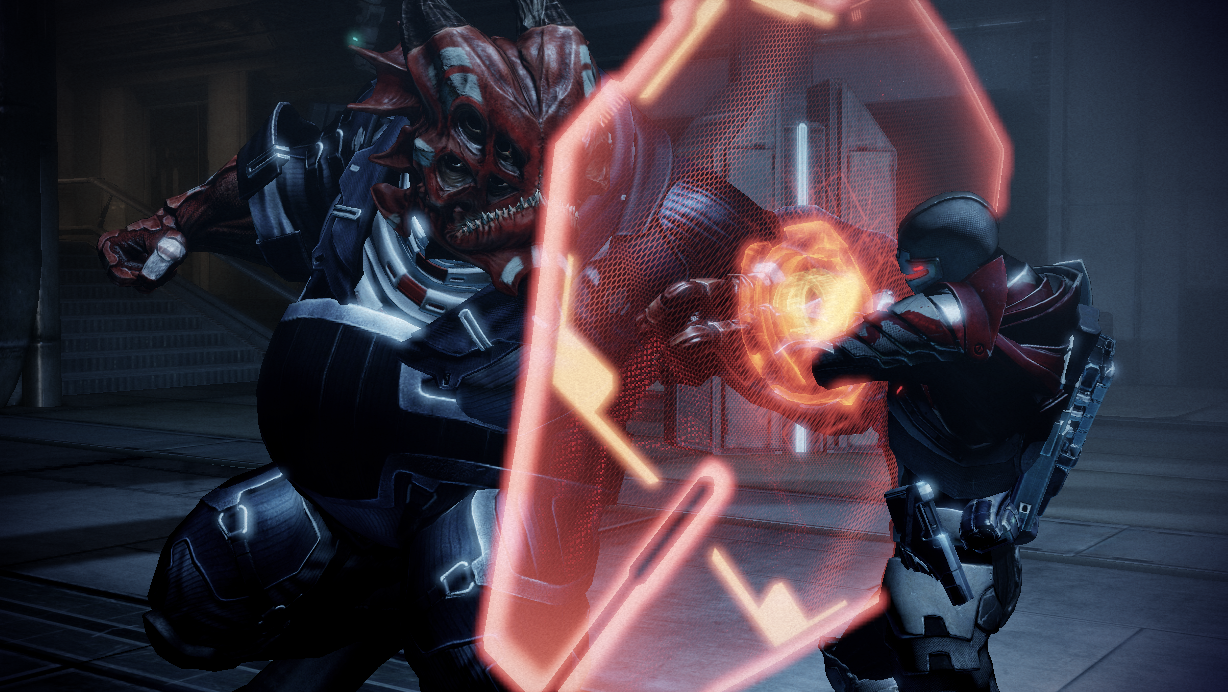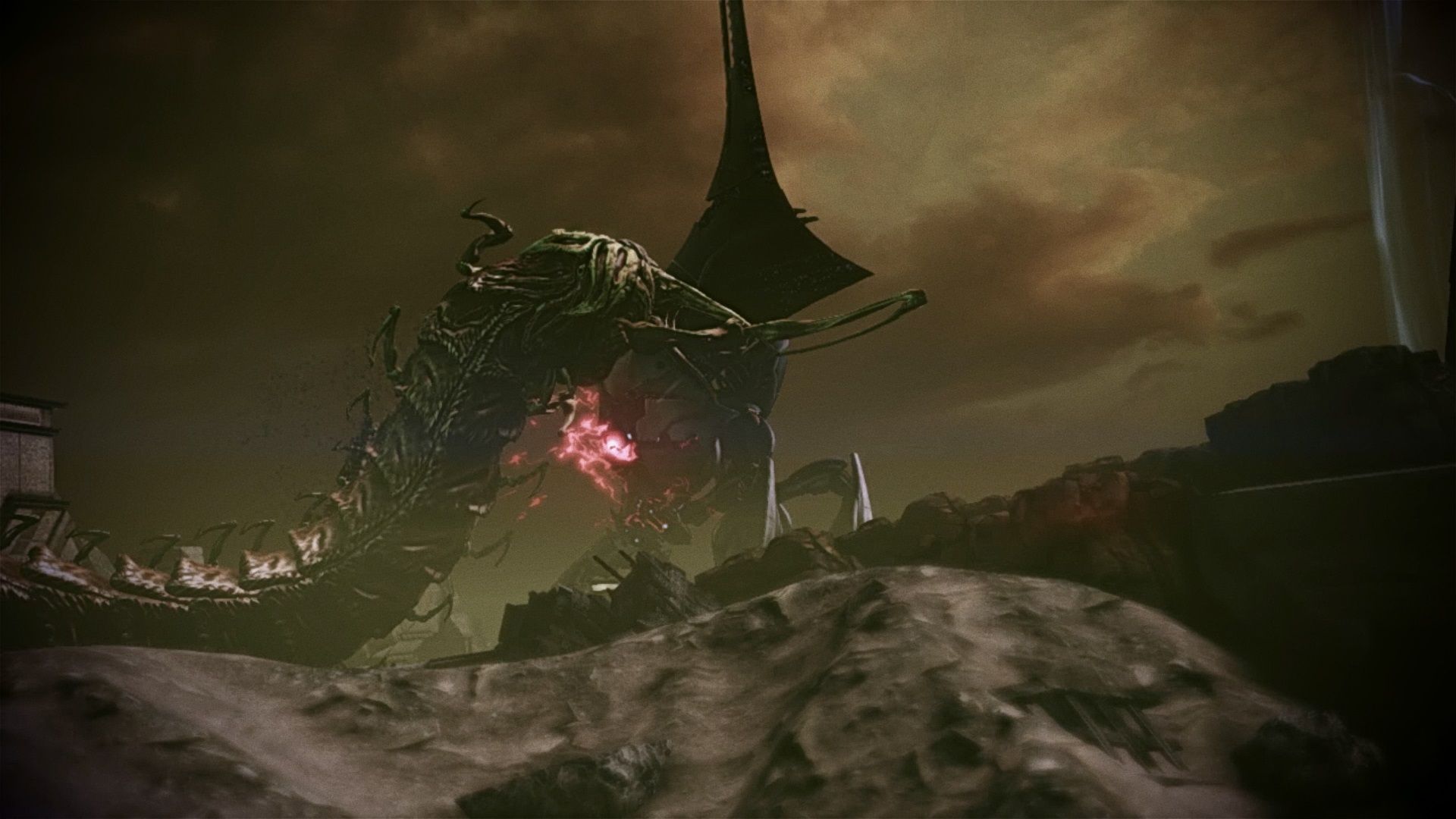The world of Mass Effect is as impressive as it is immense. From the conspiracy-fuelling experiments carried out in the corporatocratic labs of Noveria to the carnivorous Urzba plants that prey on any beings unlucky enough to get lost on Tuchanka, this is a universe where anything detectable by a microscope is a marvel.
Not all fictional worlds are like this. In order to give a science-fiction or fantasy setting a degree of verisimilitude - or the appearance of reality - you need to create vast systems adhering to the same universal logic. This logic can, occasionally, be malleable - but it is never, under any circumstances, breakable.
The way in which this is transplanted onto the Mass Effect universe as a whole isn’t necessarily via the most memorable quests you went on, or contained in revered character dialogue about the turian homeworld of Palaven, or how many balls a krogan has. Instead, this is often found in the vast and varied Codex entries that set the rules for Mass Effect’s universe at large.
“To quote the Consort, who lifted from E.E. Cummings, you do it ‘by working just a little harder and just a little longer than anyone who is not a Codex entry writer can casually imagine’,” Mass Effect 2 and 3 writer Chris Hepler tells me. Hepler was often regarded as the “loremaster” at BioWare by the time the team started development on Mass Effect 3, having written an innumerable amount of the series’ core Codex entries.
Hepler explains that he did a GDC talk about writer research skills back in 2016. “The short version is, ‘you leverage every doctor and NASA engineer you know to kick ideas around with them, then you go out and meet more, and you read voraciously’,” he explains.
“The beauty of hard science-fiction is, you can find fascinating stuff in the real world that's perfectly true, but not common knowledge, and then wrap the sci-fi around it,” Hepler says. “The example that comes to mind is the Galaxy Map entry on Palaven, the turian homeworld. It's bombarded by a particularly radioactive sun. The animals, like the turians, have metal in their carapaces to help reflect the sun's rays. The first question I had when we finally got to the entry was, ‘what about all the plants? Are they still green, or what? Don't they need to be green to make the oxygen? Because Garrus breathes oxygen just like us’.
“So, I looked into how stuff on Earth deals with nasty ultraviolet radiation that could do damage to their genes, and some lichens simply take the damage during the day, and have robust regeneration that repairs the genetic damage at night. That's real, and it's understandable, so I just said most plant life on Palaven does that, because it'd have all the time in the world to adapt to its environment. So, you generally wrap the fictional stuff around a fact you know to be true, and as long as you are consistent in your thinking, you have verisimilitude, a.k.a. something that sounds ‘real’ enough for popular culture.”
Hepler also refers to an “exemplifying bit of lore” about why krogan have four testicles. The fact that “he hasn’t got the quad for it” becomes a joke by the third game actually says a lot about effective and attentive worldbuilding. In the first Mass Effect game, it’s mentioned that all krogan have backup organs. Naturally, this would imply that they have four balls. Instead of steering clear of this or acknowledging it with dry science, the writers at BioWare thought about how this would realistically be acknowledged in krogan society, and the answer was - like in real life - converting it into a popular phrase used to slag someone off for being cowardly.
The list of examples for how fascinating Codex entries and inconspicuous descriptions are the small but necessary building blocks for Mass Effect’s immense universe is endless. However, Hepler has some aspects of lore that he’s particularly proud of to this day.
“Of the lore that I wrote, I liked that I didn't always take the easy way out on the weaponry,” Hepler says. “Like, the initial press about the omni-blade was that it was a ‘holographic switchblade’, and the early pitch was that it was made of ‘hard light’ like a lightsaber. But that made no sense – why wouldn't the Reapers, who are infinitely more advanced than us, have hard light technology all over the place? So I fudged it and said it was just a weapons-grade use of omni-gel to make a glowing-hot silicon carbide blade that didn't touch your skin because it was held in place by a mass effect field.
“That sort of request for ‘hey, we want something cool here’ came across my desk a lot, and I really enjoyed learning stuff and repackaging it as something that sounded like the coolest weapon since bread slicers. We had laser-guided lightning, shotguns that created plasma on impact, jets of molten metal, all kinds of ways to make the Reaper War sound more intense than any conflict in human history.”
After chatting to Hepler, I also spoke to some other writers who worked on Mass Effect about their parts in fleshing out this world. From writing characters like Jack to a funny typo that inadvertently evened the odds of the Reaper War, to constructing the entirety of Mass Effect 2 around the suicide mission, the sheer amout of thought that went into building this universe from the ground up is incredible. One writer I spoke to, Jay Turner, had some particularly fascinating insights on what went into making locations feel palpable.
“Mass Effect locations, at least the ones I worked on, weren't so much about being alien as fulfilling the sci-fi fantasy for the players,” Turner says. “Tuchanka was the krogan homeworld, and so it needed to reflect the krogan and their backstory while being relatable enough for the player. We did things there like a drinking contest, rat-shooting, and some very light political posturing, all to add a little more depth to the krogan.”
In a separate conversation, Mass Effect 2 writer Brian Kindregan builds on this, discussing how the krogan and their homeworld exemplify the psychology of warlike tribes. “Even in human history, there’s always been people who have this imagined return to past greatness for their people,” Kindregan says. “There's people who talk about, ‘well back when we were real men, or our women were real women’ or whatever. The krogan seem to be the perfect species to explore that mentality. Science fiction is a great way to tell analogous stories, to deal with issues that we deal with in the real world but maybe try to remove the personal point of connection from it.”
According to Turner, each and every location in the trilogy had its own set of rules to follow. From other conversations, it’s clear that a lot of these rules would have been largely defined by the framework put in place by Hepler’s Codex.
“Omega was a shifty place where people might lie to lead you into an ambush, where criminals think they're too powerful for Shepard to mess with, and where people poison your drink for the fun of it,” Turner says. “I imagine that most players who pick up a sci-fi game like Mass Effect have some experience with those themes in pop culture.
“For Omega, we were working on the ‘Mos Eisley’ fantasy, a shifty dive club where all the bad people go to celebrate being bad, run by an immensely old and powerful pirate queen. For both [Omega and Tuchanka], we designed everything from the ground up to reinforce the themes for the location. Every side quest and conversation had to reflect back on the world we were building and immerse the player deeper into that world.”
I think that last part rings especially true - that every facet of Mass Effect reflects back on the overall universe it’s contained in. From the behaviour of small flowers to the structure of entire planets, every single aspect of Mass Effect works in perfect harmony with every single other one. When you look at the work of the writers above, and how painstakingly and meticulously detailed the framework they built is, it makes sense that this has undoubtedly become one of the most fleshed-out and fascinating universes ever constructed for a video game.




